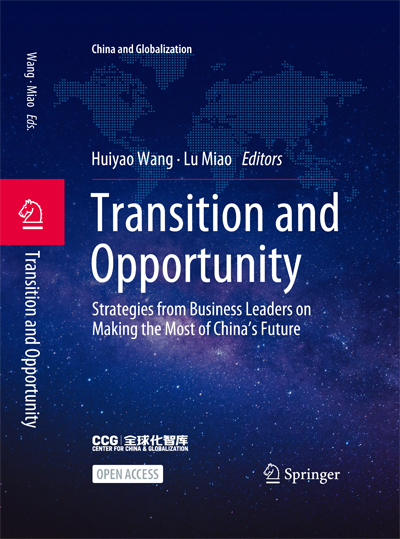Wang Mengyan: Five Trends for the Future of Educational Testing
“The implementation of China’s 14th Five-Year Plan will accelerate the modernization of the educational system and increase the quality of education and push the educational examination industry to reform and create a more effective and modern examination system suited to China. There are five major trends in educational testing—growth in international education, Sino-foreign university cooperation, remote testing technology, artificial intelligence and incremental business.”
——Mengyan Wang, Managing Director, ETS China.
Managing Director of ETS China: International Educational Testing Development in a Post-COVID China Context: Five Trends for the Future of Educational Testing
Education is a fundamental and universal topic for all communities and all age groups. In all regions, we are witnessing education undergoing tremendous changes and development, with both opportunities and challenges. Since 2020, the COVID- 19 crisis has crudely forced us to think about the possible impacts it may cause. As an important link in the development of education, the testing industry is also continuously adjusting its approach, value and design concept. Educational assessments involve a variety of factors and different themes, and a slight change may affect the overall situation. Educators are also actively exploring ways in which testing can help students grow and conform to national and social training goals.
The 14th Five-Year Plan period is an important stage for China to accelerate its modernization of the educational system and increase the quality of education. It will also be a critical period for the educational examination industry to deepen reforms of educational assessments in this new era, to create a modern examination system suited to China, and to modernize the national governance of this system and make it more effective. As the world’s largest institution engaged in testing development, Educational Testing Service (ETS) has seen how educational testing in the USA, and global educational assessments have changed over the past 70 years. Our assessments, learning solutions and pioneering research help students, educators and employers clearly see the next step on their path to new possibilities.
As the first international testing institution to enter China, ETS enjoys an outstanding reputation in the field of testing both in China and around the world. In 1981, ETS launched its TOEFL iBT and GRE tests in China, marking the beginning of a 40-year strategic partnership with the National Education Examinations Authority (NEEA), which has made great contributions to helping Chinese students study abroad and to promote international cultural exchanges. Every year, hundreds of thousands of Chinese students take either the TOEFL iBT or the GRE in order to fulfill their dreams of overseas study. In terms of the test volume, China contributes the largest number of TOEFL candidates and this number continues to grow. The increase in the number of candidates also reflects the continuous affluence of Chinese students studying abroad. TOEFL is by far the most widely recognized English proficiency test, with more than 11,000 institutions worldwide accepting and accrediting TOEFL scores.
As an international testing service provider with extensive interactions in China’s education industry, ETS has witnessed the growth of international education in China over the past four decades. Looking ahead, we believe there are several emerging trends that should be taken into consideration for foreign testing companies when developing business strategies for the China market.
1 Trend One: Growth in International Education Creates More Opportunities for Tests and Learning Products
China has been the largest country of origin for international students in the world for many years. With the growing demand among Chinese students for a more diverse educational experience, schools that provide international curricula have gradually become a new choice for middle-class families in China. For the past five years, there has been a reaction against the rapid increase in the number of private schools in China. The Chinese government has taken steps to tighten regulations and closely scrutinize schools to ensure regulations are met. However, the actual demand for international education has not been affected. Recent data show that the number of students applying to study abroad has not decreased due to the COVID-19 outbreak. Schools offering international programs remain popular with parents, with dozens of new international schools opening every year. In terms of geographical distribution, international schools have expanded from first- and second-tier cities and coastal cities to third-tier and inland cities, confirming the preference among Chinese parents for international education. With the increasing demand for international education, international programs and international educational testing systems will receive more attention from schools. As a professional testing developer, the opportunities for ETS in China are obvious. Over the past two years, ETS has partnered with a number of international schools to help them provide convenient testing services and professional teacher training, as well as testing tools and academic support for their development of international curriculum.
2 Trend Two: Sino-Foreign University Cooperation is Seeing New Growth Due to the COVID-19 Crisis
Sino-foreign cooperative joint venture—a flexible legal partnership between Chinese universities and international universities—has proven to be an effective way to engage in Chinese higher education. Depending on the scope of the partnership, joint ventures can operate on multiple levels, e.g., universities, institutes and degrees. In the fall of 2004, the University of Nottingham, a British university, opened a Chinese campus in Ningbo, establishing the University of Nottingham Ningbo China, the first Sino-foreign cooperative university in China. As of 2020, there were a total of 10 Sino-foreign cooperative universities, and over 2,332 Sino-foreign programs, which recruited a total of over 300,000 Chinese students, forging a special interest group in Chinese higher education.
Sino-foreign cooperative universities in China are embracing fresh opportunities as Chinese students are likely to pursue this kind of higher education in China rather than going abroad mainly due to coronavirus concerns and geopolitical uncertainties. China’s Ministry of Education began to allow Sino-foreign cooperative universities and programs with the goal of providing Chinese students with a foreign education experience right in their home country.
In light of the rapid development of Sino-foreign universities and programs, international assessments such as TOEFL iBt and GRE play a key role in evaluating applicants before they join an English-language curriculum. In China, the majority of cooperative programs require students to submit TOEFL scores to assess their English language proficiency. For example, Duke Kunshan University listed TOEFL scores as part of their required admission materials. Admission officers claimed that they welcome applicants with TOEFL scores to apply as they believe good TOEFL scores, the gold standard of academic English-language testing, can guarantee that students are qualified to learn in an English-language academic environment. Though the number of students going for direct study abroad may decrease in the future, I am optimistic that the number of students choosing to study at Sino-foreign cooperative university will increase, which brings new business opportunities for assessment testing.
3 Trend Three: Remote Testing is Here and Technology is Constantly Innovating
After COVID-19, ways of learning have become more flexible. Students do not need to be taught face-to-face, nor do they need to receive the same teaching content at the same time and space. A single teaching method cannot meet the needs of schools. During the worst periods of COVID-19, with improvements in and extensive use of remote proctoring techniques offline programs went online due to campus closures, while testing methods also changed. In March 2020, ETS launched its TOEFL iBT and GRE Special Home Edition test to help students and administrators whose plans were disrupted because of the pandemic. The Home Edition of the TOEFL test is identical to the traditional test center version in content, format, on-screen experience and scoring. It uses live, online human proctors supported by state-of-the-art AI technology to ensure security. Unlike other at-home tests, the TOEFL iBT Home Edition has actual human beings proctoring the test taker at every step of the process, in addition to a variety of AI measures. This combination of human proctoring and AI ensures that institutions can trust the scores they receive as valid, reliable and accurate.
Meanwhile, the use of the remote test has also led to continuous innovations in proctoring techniques to deal with potential cheating. In the future, remote testing will become more mainstream because of its convenience and will also create more opportunities for related industries. Of course, at the same time, security issues that remote testing has to deal with will also pose additional challenges for test developers.
4 Trend Four: Artificial Intelligence (AI) Will Bring New Opportunities and Challenges to Educational Testing
As artificial intelligence technology (AIT) continues to develop, the content development and scoring of test questions will eliminate the complete dependence on human beings, and ultimately shift to a combination of AI and human scoring. For example, in TOEFL, the listening and writing sections of the test are scored using a combination of E-rater, an intelligent scoring system developed by ETS over many years, and a human rater. The combination of the human and AIT elements can effectively avoid potential unfairness in the scoring process, reduce operating costs, and improve test operating efficiency.
The development of individualized education has placed new requirements on educational testing. A single test cannot determine a student’s fate. Instead, schools and admissions departments are more likely to assess and predict a student’s academic ability and development potential using a more complete picture of the student’s academic achievements. In the field of educational testing, the test data from different test times and groups can be correlated and analyzed using scientific assessment methods. Test-related big data mining can be used to develop testing and assessment services for different subjects as well as different regions, schools, candidates, etc., and establish test data rules, thereby providing a basis for education reform, improvements in teaching, management optimization and scientific decision-making.
5 Trend Five: Keep Creating New Incremental Businesses
The past year has forced all educational institutions to consider how to move forward, responding agilely to the world around us and the needs of our key stakeholders. The historical changes we are experiencing have exposed the fact that innovation and creativity are broadly distributed by various organizations and individuals. We have to learn from and support teachers, students and academic institutions, as they are the ones leading the transformation in education during and after the present crisis. While the TOEFL iBT test has cemented its place as the gold standard in the international admissions space, ETS continues to expand its portfolio with innovation in testing and a dedication to meet the changing needs of universities and test- takers. In May of 2021, ETS announced the introduction of a brand-new English- language proficiency assessment, TOEFL? Essentials ?. The TOEFL Essentials test has become the second high-stakes English-language proficiency test within the TOEFL? Family of Assessments—joining the TOEFL iBT ? test, which was launched more than 15 years ago. TOEFL Essentials is also the first English-language test that offers the ideal combination of the convenient, affordable access students want and the quality institutions trust. The TOEFL Essentials test is a versatile four- skill (listening, reading, speaking and writing) English-language test designed for university admissions and other high-stakes decisions. It measures a combination of academic and general English skills—those that are needed for the classroom setting and beyond (e.g., internships and interviews). In addition, the test provides institutions with expanded insights through writing and speaking samples from the test, additional measurements of foundational skills and a unique Personal Video Statement—a short, unscored, video recording that provides an opportunity for applicants to showcase their unique personalities.
With regard to the development of education in China, as well as the Ministry of Education’s 14th Five-Year Plan for educational testing, we are of the opinion that there are still many spaces and opportunities for the development of ETS in China. Since the development of international testing institutions in China is of course dependent on government guidelines, an important task for the development of educational examinations in China during the 14th Five-Year Plan period is to establish a more scientific-educational assessment system, deepen the reform of examination and enrollment systems and modernize the system of educational governance to make it more effective. As for as business development is concerned, ETS hopes to be deeply involved in the Chinese market, to support English-language education in China, and to coordinate with China’s “internal circulation” development plan. Because of its world-class reliability and reputation, as well as its global recognition, more and more higher education and international exchange companies and government agencies in China are using TOEFL as one of the selection tools for English-language testing, and applications for TOEFL have expanded from traditional language testing for studying abroad, to serve as a broader English proficiency test. In December 2019, ETS and NEEA jointly announced the completion of work to match TOEFL scores to Chinese English proficiency and other metrics. In the future, TOEFL will take on more responsibilities in the area of English-language education.
In terms of product development, we also attach great importance to China’s domestic market, especially in the fields of international education and English education for teenagers. ETS has established an R&D center in China and cooperates with provincial educational testing authorities such as the Beijing Education Examinations Authority and the Shanghai Education Examinations Authority. In the future, we hope to link domestic demand in China with global trends in the field of testing research and product development, developing tests for Chinese education and making concerted efforts to meet the testing needs of China’s 14th Five-Year Plan for educational development using American testing technology. Large-scale educational examinations in China are basically designed, developed and implemented by institutions under the Ministry of Education and local education examinations authorities. There are high barriers between China’s official examinations and international tests, with very little exchange and cooperation between the two. China’s official examinations are more tailored to its own educational needs, while internationally renowned testing institutions are often equipped with a large number of testing R&D professionals. Increased cooperation between the two will not only help China create a global testing brand but also make use of the resources and talent in international testing institutions to fill the need for testing professionals in China, making testing in China more professional and global, while also promoting the Chinese experience globally to serve more students.
In terms of the business environment, we hope that, in addition to concentrating resources on the development and operations businesses focusing on educational assessment and selection in China (e.g., senior high school entrance examinations and national college entrance examinations), Chinese government-led examination institutions will encourage private schools and non-governmental educational institutions to use third-party examinations and encourage international examination institutions to compete domestically to promote overall development. We also hope that increased participation by international examination institutions in open tenders will improve efficiency and ensure the quality of examinations.
I would like to close this article with words of hope and trust. The macro educational policy in China places a priority on a shift in testing methods. Based on our pioneering efforts in testing development and our 40 years of experience in the Chinese market, ETS will continue to promote international cooperation in education and actively adapt to the new dual-circulation development model. Education in China today faces many problems, such as how to use testing to promote teaching, how to evaluate talent in a diversified way, how to guarantee educational fairness, and access whether standardized tests will continue to work, which are also problems that will continue to drive the progress and development of ETS. In addition, the COVID-19 crisis has exposed the fact that innovation and creativity are broadly distributed throughout all segments of the industry. We have to learn from and support the responses coming from local markets, teachers, students and communities, transform education systems during and after and present crisis, and, identify more opportunities for growth from this crisis. The world is changing dramatically, and ETS and other similar international educational institutions should actively take on responsibilities, redefine their purposes and drive innovation in international education testing.
Mengyan Wang is the country manager of ETS Assessment (Beijing) Ltd. Mengyan Wang is responsible for ETS products marketing and business strategy in Greater China Region, building solid partnership with local stakeholders including government, universities, language training institutions, inter- national schools etc. Mengyan Wang’s career goal is to integrate vision, insights, and management skills to bring in-depth communication between ETS and local stakeholders to advance the quality of education and reach mutual sustainable growth under the context of globalization. Prior to ETS, Mengyan Wang spent 10 years in management and teaching in the education industry, working to bring world-class teaching and learning resources to Chinese students. Mengyan Wang holds a Master’s degree from the University of Cambridge with a major in second language education.
// Editor’s note
Transition and Opportunity: Strategies from Business Leaders on Making the Most of China’s Future is the third book in the “China and Globalization” series, published in partnership with Springer Nature. The 22 essays contained in this volume are the work of a wide range of global experts in China’s business community. Contributors include the leaders of international chambers of commerce, CEOs and senior executives from leading MNCs and industry experts or country heads from global consulting firms. In a world of constant change and uncertainty where there is so much in doubt, these perspectives on the future of business in China, which are rooted in real-world experience and proven strategies that work, provide an immense trove of knowledge for those looking make the most of China’s bright future.

Transition and Opportunity
Editors: Huiyao Wang, Lu Miao
Published in February, 2022
Publisher: Springer Nature Publishing Group
Download Book at Springer
https://link.springer.com/book/10.1007/978-981-16-8603-0
Transition and Opportunity: Strategies from Business Leaders on Making the Most of China’s Future is the third volume in CCG’s “China and Globalization” series of books edited by Dr. Huiyao Wang and Dr. Lu Miao.

Series Editors: Huiyao Wang Lu Miao
Publisher: Springer Nature Publishing Group






